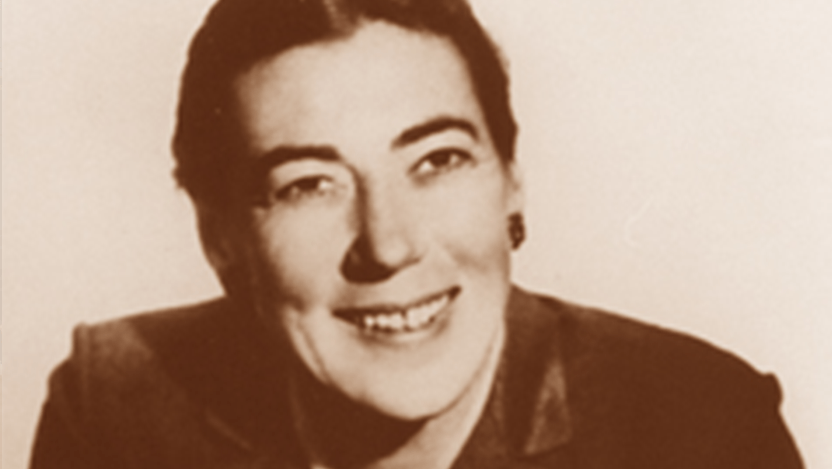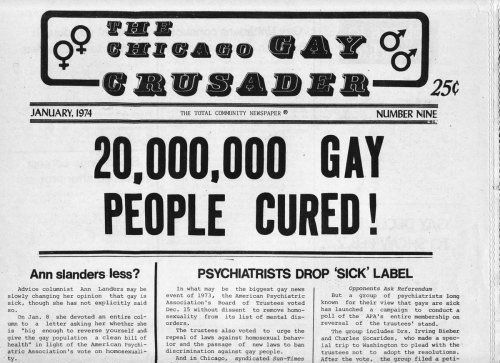
LGBT history month: The removal of homosexuality as a disorder from the DSM
LGBT history month: The removal of homosexuality as a disorder from the DSM
How Evelyn Hooker’s revolutionary studies on gay men led to major changes within psychology and the Diagnostic and Statistical Manual.

Evelyn Hooker. Source: Frameline
This LGBT history month, Kara looks at an influential study by Evelyn Hooker that ultimately resulted in homosexuality being removed from the Diagnostic and Statistical Manual (DSM) of the American Psychiatric Association (APA). Homosexuality was thought to be a psychological disorder until relatively recently, and was only fully eradicated from the DSM in 1987.
Evelyn Hooker began conducting research in 1953, in the McCarthy era where penalties for homosexual activity were severe, and working alone in such research during such a time was stressful and often incredibly difficult. The interest in such research was sparked by a friendship with an openly gay man, Sam From, whom she met in an introductory Psychology class where homosexuality was taught as a pathological disorder. Sam encouraged her to research ‘non-pathological’ gay men, and introduced her to the community through parties, events and organisations.
Hooker applied for a grant from the National Institute of Mental Health for a formal study, later titled “The adjustment of the male overt homosexual”. Hooker recruited 60 participants, half of whom identified as exclusively homosexual and the other half as heterosexual. The participants were matched for education, IQ and age in order to make comparisons between them.
Despite pressures to conduct research on campus, she insisted on conducting interviews from her home office in order to preserve confidentiality. Trust was a significant issue throughout the study- one participant called long distance regularly to ask whether the tapes of his participation had been erased. In order to understand the lives of the men she interviewed as fully as possible, she needed to maintain certain identifying data for each participant and thus worked alone for the entire data collection phase of the study.
Each participant took three projective tests (The Rorschach, MAPS, and TAT test), the results of which were given to experts in those tests after identifying information had been removed. The tests were given adjustment ratings ranging from superior to disturbed as is standard with projective tests, as they are designed to measure psychological maladjustment.

Rorschach Test. Source: Getty Images
Two thirds of participants in each group were judged to have average or better adjustment, and no association was found between homosexuality and psychological maladjustment. The experts were given paired responses, and asked to identify the homosexual. All were unable to do so.
Hooker’s research was replicated in 1972 by Siegelman with a larger sample size and objective measures of neuroticism, unlike the projective tests used by Hooker. Siegelman found identical results.
The results of these studies were incredibly influential in showing no associations between homosexuality and psychopathology, and pioneered significant changes within the psychiatric and psychological community.
Hooker was later asked to be part of a task force with the NIMH to address homosexuality, which aimed to ‘sweep it out from under the rug’. There was significant resistance to disentangling homosexuality from psychopathology, however in 1972 the APA voted to delete homosexuality from the DSM, with the exception of one disorder (ego-dystonic homosexuality), which was removed in 1987. Hooker is considered a key figure in the movement to depathologise homosexuality.
The Chicago Gay Crusader, January 1974. Source: Twitter
Read more about Evelyn Hooker:
The pioneering psychologist who proved that being gay isn’t a mental illness | Aeon Videos
Hooker, E. (1993). Reflections of a 40-Year Exploration. The American Psychologist, 48(4), 450–453.
Hooker, E. (1957). The adjustment of the male overt homosexual. Journal of Projective Techniques, 21, 18–31.
Milar, K. S. (2011, February). The myth buster. Monitor on Psychology, 42(2). http://www.apa.org/monitor/2011/02/myth-buster
Siegelman, M (1972). Adjustment of male homosexuals and heterosexuals. Arch Sex Behav 2, 9–25. https://doi.org/10.1007/BF01542016
Image sources
ChangingOurMinds_Distro_832x468.png (832×469). (n.d.). Retrieved 22 February 2021, from https://www.frameline.org/images/Import/2017/catalog/ChangingOurMinds_Distro_832x468.png
Old Rorschach inkblot psychodiagnostic test card. (n.d.). Retrieved 22 February 2021, from https://www.gettyimages.co.uk/detail/photo/grey-and-black-rorschach-ink-blot-on-a-white-royalty-free-image/173895881
Making Gay History. (2017, December 15). [Tweet]. @MakingGayHistry. https://twitter.com/MakingGayHistry/status/941767042511798272





